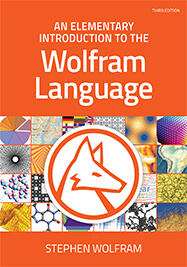|
|

Description
As the world's first and only full-scale computational language, the Wolfram Language represents a milestone in the development of programming languages that makes leading-edge computation accessible to everyone. Unique in its approach of building in vast knowledge and automation, the Wolfram Language scales from a single line of easy-to-understand interactive code to million-line production systems. This book provides an elementary introduction to the Wolfram Language and modern computational thinking. It assumes no prior knowledge of programming, and is suitable for both technical and non-technical college and middle-to-high-school students—as well as anyone with an interest in the latest technology and its practical application. Run everything in this book in any Wolfram environment on the web or your desktop. ContentsPreface What Is the Wolfram Language? Practicalities of Using the Wolfram Language Other Resources 1. Starting Out: Elementary Arithmetic 2. Introducing Functions 3. First Look at Lists 4. Displaying Lists 5. Operations on Lists 6. Making Tables 7. Colors and Styles 8. Basic Graphics Objects 9. Interactive Manipulation 10. Images 11. Strings and Text 12. Sound 13. Arrays, or Lists of Lists 14. Coordinates and Graphics 15. The Scope of the Wolfram Language 16. Real-World Data 17. Units 18. Geocomputation 19. Dates and Times 20. Options 21. Graphs and Networks 22. Machine Learning 23. More about Numbers 24. More Forms of Visualization 25. Ways to Apply Functions 26. Pure Anonymous Functions 27. Applying Functions Repeatedly 28. Tests and Conditionals 29. More about Pure Functions 30. Rearranging Lists 31. Parts of Lists 32. Patterns 33. Expressions and Their Structure 34. Associations 35. Natural Language Understanding 36. Creating Websites and Apps 37. Layout and Display 38. Assigning Names to Things 39. Immediate and Delayed Values 40. Defining Your Own Functions 41. More about Patterns 42. String Patterns and Templates 43. Storing Things 44. Importing and Exporting 45. Datasets 46. Audio and Video 47. Writing Good Code 48. Debugging Your Code What We Haven't Discussed Afterword: Being a Programmer Where to Go Next Answers to Exercises Index Related Topics Programming |
|
|
